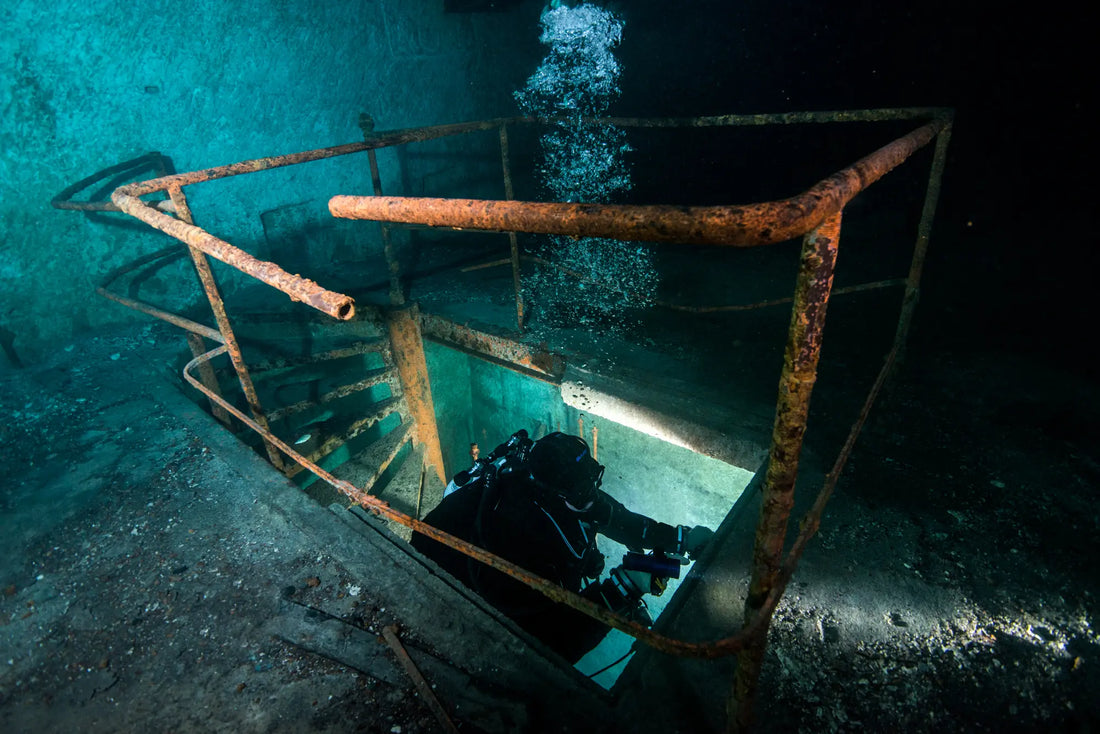By René Petterson, f or Frivannsliv
Have you experienced reaching your gas reserves before your fellow divers? Would you rather have the extra 5-10 minutes on the dive?
Some divers have physiologically higher air consumption than others, but most can take some simple steps to reduce air consumption. Especially in cases where you have changed your equipment, changed suits, wetsuits or bottle sets, you may find that air consumption increases.
1.
Row down after entering the water and before starting the descent. Inflate the bcd. Close the vent on the dry suit and blow some air into it (remember to open it before descending). Lie on your back, breathe with your stomach and slow down your pulse. Many people experience, especially at the start of their diving career or if it has been a while since the last time, that they get a little nervous when getting dressed and jumping in. Overcome this and calm down and you will get more out of your dive.
2.
Balancing is an important factor for good buoyancy control. The right amount of lead depends on several things. If you have a neoprene suit, you will find that it is compressed, especially in the first 10 meters in the water column. When neoprene is compressed, the material loses buoyancy and in principle needs less lead to achieve negative buoyancy. The shell suits have a more constant need for lead. You can do a rough balance with a full bottle, but the best time to do a proper balance is with 40-50 bar on the bottle. You have the right amount of lead when you float with the water at eye level and a normal inhalation into the lungs. When you breathe you will sink calmly. Remember that descent and ascent must be carried out slowly.
3.
Streamlining: As divers in cold water, we push quite a lot of mass through the water column. Since we need the insulation of good equipment and good clothing, this is something we cannot do much about. Something that can easily be optimized is how the equipment sits on the body. Make sure you don't have components dangling and streaking in the water unnecessarily. get rid of unnecessary equipment and components that are not important for the dive. A good example is fishing equipment and photography equipment on the same diver. This scatters the focus and often results in no results. Try to reduce the number of tasks per dive and evaluate whether they are achievable. This ensures better experiences and less diving stress.
4.
Work on keeping your arms still and let your legs provide the momentum. Work on finding a balanced horizontal/lying position in the water. This reduces the amount of mass you push through the water column and gives you the best possible payoff for each leg kick.
Do a self-evaluation of the effectiveness of your flippers, plastic fins are usually lighter and softer than rubber fins. This means that plastic fins often put less strain on the muscles in the calves, but also provide significantly less propulsion and have a shorter lifespan because the plastic becomes softer as it wears.
In most cases, rubber fins are designed to push more mass through the water column and can initially feel a bit heavy. This is the type of swimming foot that gives the most thrust per consumed energy. The downside of the medal is that some divers find that they have to train their muscles, especially in their calves, in order for them to be comfortable to swim with. Work with and be aware of your breathing, make sure you breathe deeply and calmly (breathe with your stomach).

